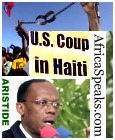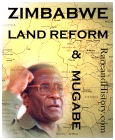The Struggle for Zimbabwe - Encircling the Cities?
Posted: Thursday, December 24, 2009By David Martin and Phyllis Johnson
December 24, 2009 - The Herald
This is the fourth in a series of eight articles on the events of late 1979 and early 1980, the last stages leading to the independence of Zimbabwe.
ON March 3 1978, Ian Smith, Abel Muzorewa, Ndabaningi Sithole and Chief Jeremiah Chirau had met in the Governor's Lodge in Salisbury under a portrait of Cecil Rhodes and signed an internal agreement for a one-year transitional arrangement leading to the hyphenated state of Zimbabwe-Rhodesia.
Though Smith had finally signed away exclusive white rule in Rhodesia, he had by no means signed away white power... Day-to-day administration would be handled by a Ministerial Council consisting of nine whites nominated by Smith and three from each of the black political parties.
The arrangement was in trouble almost immediately because Smith did not perceive the need to meet the expectations of the black electorate. His overriding concern continued to be the welfare of the whites...
Even more irritating to Smith, it became apparent they could not stop the war. Elaborate plans for an amnesty, including offers of jobs, education and money, were ignored by the guerillas, who by now controlled zones which were semi-liberated in the sense that the old administration had broken down, they moved relatively freely, and the security forces were able to penetrate only by air or concentrated ground attack...
On October 18, the Rhodesians bombed Freedom Camp, a few kilometres north of Lusaka, bluntly bringing the reality of war to the Zambian capital.
More than 200 people were killed and several hundred wounded, most of them young men, but again they were unarmed civilians - the ill-defined line between recruits and refugees - and the UN and the International Red Cross confirmed it was a refugee camp which they had visited.
Three days later there were several hundred more casualties in a second attack further north on a camp near Mkushi. Nkomo said the dead and wounded were mostly young women, and this was later confirmed by a senior member of Rhodesian Special Branch, Mike Edden, who claimed the wrong camp was attacked.
Edden said that when a ground force landed and found that the casualties were nearly all women, they decided to fly a handful of journalists 600km from Salisbury for a cover-up operation: they re-arranged the bodies so the visitors saw mostly men and lots of captured equipment.
The Front Line States tried to defend themselves militarily and to urge the Patriotic Front into greater unity, which, on paper, they achieved.
A constitution was drafted for a single political party, plans were worked out for military integration; both sides described them as sound, yet the problem of implementation remained...
White morale plummeted as, with blacks in government, it became unclear who or what they were fighting for.
Sanctions were not lifted. The economy began to ease slightly as more international money was made available to a partly black regime, but it was eaten away by the costs of defence.
"Censorship in Rhodesia is now virtually total. Telephones are tapped. Mail is opened. Torture of the African population is widespread," a white Rhodesian wrote in a letter smuggled out of the country.
Whites voted "Yes" in a referendum on majority rule and elections were organised on the basis of universal adult suffrage but with separate racial rolls, and with the entire country in the grip of martial law.
Zanla had long since stopped recruiting, with an instruction "that no one should pass through our operational area", the Zanla Commander, General Josiah Magama Tongogara, said. "If you feel that you want to fight, to contribute to the armed struggle, stay there, we are training people there, training doesn't mean shooting, but liberating their minds."
Small groups of Zanla guerillas had crossed the Bulawayo-Plumtree rail line and were advancing towards the western border. There were large concentrations along the main rail line through Gatooma, Hartley and Que Que (now Kadoma, Chegutu and Kwekwe).
There were guarded convoys on virtually every main road, and the Second Chimurenga was moving towards its goal of encircling the cities.
"Our purpose was to isolate the cities and cut them off, not to attack them," the Zanla chief political commissar Josiah Tungamirai explained, "a few well-planned strikes to frighten the white population. Salisbury had been vulnerable for some time, we had cadres in Bulawayo, but it was farther away from our areas."
Zipra was increasing its military activities in the west and north-west, and on one occasion a company of 150 Zipra guerillas fought jointly with a company of Zanla north of Karoi for a month or so before withdrawing.
Between February and May 1979, members of the Zanla High Command were instructed to go inside the country to help to set up formal structures of administration, and during intense security of the internal elections, their advice to the people was: "If you are forced, don't resist, go and vote -- for Muzorewa."
Among their tasks for 1979 were to create a people's military to defend the liberated zones, consolidate semi-liberated zones, step up attacks on enemy bases and economic targets, and intensify the programmes of politicisation.
"We are now entering a decisive phase of the war," Tongogara said. "When the enemy commits all sorts of atrocities in the battlefield and right in the capital he mushrooms up some groups to form a government.
"So all these symptoms we are seeing now convince us that we are really entering the decisive stage. I think this is the beginning, the internal arrangement, there's something more coming, because he's (Smith) going to try using Sithole and Muzorewa and everybody up to a point, then something else is going to come out."
D. Martin and P. Johnson, The Struggle for Zimbabwe: The Chimurenga War, Faber/ZPH, 1981Printer friendly version
Send page by E-Mail

Previous Page | Zimbabwe Watch | Historical Views | Home
NOTICE: All articles are the copyright property of the writers. In accordance with Title 17 U.S.C., section 107, some material on this site is provided without permission from the copyright owner, only for purposes of criticism, comment, scholarship and research under the "fair use" provisions of federal copyright laws. Visit: http://www.law.cornell.edu/uscode/17/107.shtml for more details. If you wish to use copyrighted material from this site for purposes of your own that go beyond 'fair use', you must obtain permission from the copyright owner.










